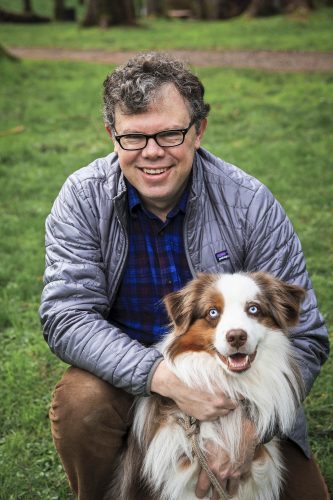
A controversial 34-lot planned unit development near Hendricks Park has been approved by a Eugene land-use hearings official pending an appeal to the Eugene Planning Commission from opponents of the plan.
Virginia Gustafson Lucker handed down the Capital Hill planned unit development (CHPUD) decision on April 20. Members of a joint response committee from the Fairmount and Laurel Hill Valley neighborhoods — the primary opponents of the plan in the Capital Hill neighborhood — submitted their appeal on May 7, hoping to prevent the plan as proposed from moving forward.
“We’re all disappointed, of course,” Jason Brown, a response committee leader, wrote in an email to Eugene Weekly. “But I am not surprised for a number of reasons. I may be a tad bit cynical, but the system is inherently rigged against what we are trying to do. The city wants to encourage development and investment. They are, in many ways, in the real estate business.”
The response committee argues that the “mostly technical conditions” the hearings official is imposing on the PUD “do not address our major concerns with crucial issues such as number of trees to be cut, increased traffic, reduced safety and emergency response, geological hazard, and environmental protection.”
“It’s more than just a NIMBY (not in my backyard) issue,” says response committee member Nathaniel Teich. “We are concerned beyond ourselves for the effect on the city in the larger sense, given the fact that the ridgeline is a historical and iconic feature of Eugene itself.”
Teich and other committee members say they fear that if plans such as the CHPUD can be approved, it will open up the door to other risky developments.
The land-use decision entails 20 conditions, including protective fencing around preserved trees; a tree matching/replacement plan in the case of required removal of protected trees; restrictions on buildings on specific lots; and 5-foot sidewalks on either side of Capital Drive — addressing one major safety concern posed by committee members.
The committee’s appeal addresses three areas of concern: the environmental impact of clearing trees; safety hazards that accompany increased density and construction to the single-entry and exit neighborhood; and problematic geological assessments from the PUD proponents.
Central to the fight for both the PUD applicants and committee members was the role a 1974 South Hills Study (SHS) played in determining the legality and scope of the development. Despite a “novel” argument on behalf of the applicant’s attorney that because the land in question was outside city limits when the SHS was adopted, it is not subject to the study, Lucker found the area involved is governed by the SHS.
The SHS was adopted into city code in 1974, regulating all development on land above 500 feet in elevation south of 18th Avenue.
Brown says he feared that if this area had been found to be exempt from the SHS, it would rip open new development areas, and while opponents of the PUD achieved long-term preservation goals — ensuring areas such as the Capital Hill and Laurel Valley neighborhoods are within the study’s boundaries — the protections afforded by the SHS are still being questioned.
“It is clear that the response committee and neighbors do not believe the applicant has done enough; there are always ways that ‘more’ could be preserved,” the decision states. “However, in ‘encouraging’ the applicant to design a residential development that respects the existing characteristics of the site and minimize the impacts, the South Hills Study residential development standards do not require absolute preservation or the absence of any impacts.”
Brown disagrees with the hearing official’s decision and says he feels confident that the strength of the committee’s arguments will win out with the Planning Commission and the “small town politics can melt away.”
One member of the Planning Commission, Bree Nicolello, who works for the Schirmer Satre Group, the landscape architect for the planned subdivision, but who is not herself involved with the Capital Hill PUD, has said she will recuse herself from voting on the PUD.
“The silver lining for us in this case is that the hearings official more or less accepted wholesale the arguments of the Eugene Planning Department, who accepted wholesale the claims of the applicant,” Brown says. “In doing so, we are confident that they have opened themselves up to enormous weakness that we will exploit in our appeal to the city and when the case reaches LUBA at the state level.”
Brown and the response committee say they think it is time to oust city councilors who are in the “development business” and elect those “with an eye toward counselors who understand the importance of parks and open space to the future of the Eugene community.”